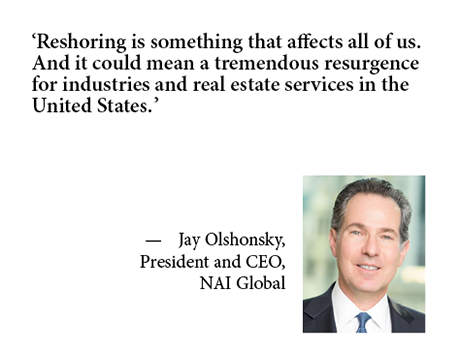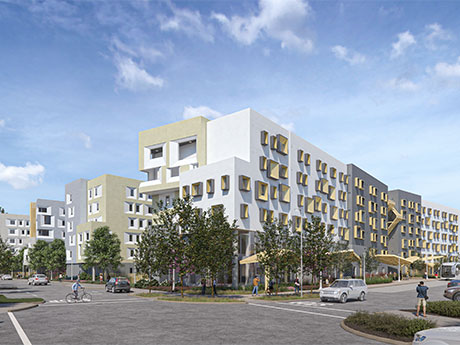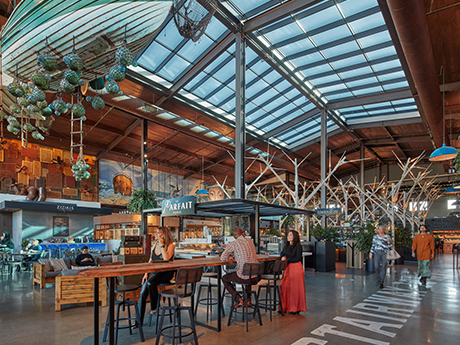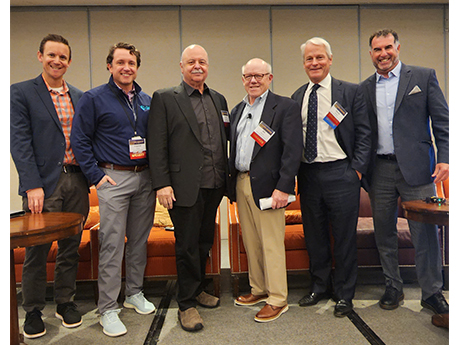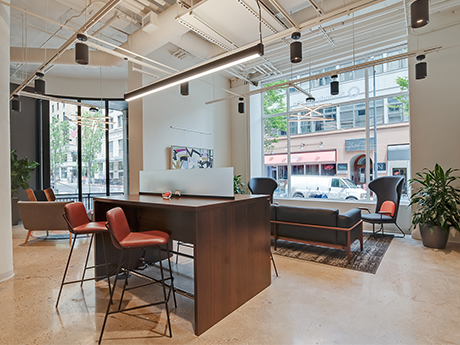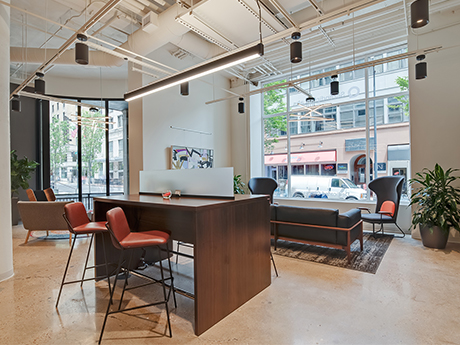After massive bank runs earlier this month, the Federal Deposit Insurance Corp. (FDIC) took the reins at two regional banks, Silicon Valley Bank based in Northern California and New York City-based Signature Bank. First Citizens Bank has since agreed to acquire the assets of Silicon Valley Bank. According to the FDIC, 2023 already represents the largest year in bank failures in terms of total assets ($319.4 billion combined between the two banks) since 2008, when 25 banks failed (representing $373.6 billion in total assets). “In a very short timeframe, we’ve now seen two of the biggest bank failures on record, the biggest one of course being Washington Mutual back in September 2008,” said Matt Anderson, managing director of Trepp, a New York-based data analytics firm. “We are in a very fraught period right now. Nerves are very frayed at the moment seeing two large bank failures in quick succession.” The comments came during a Trepp-hosted webinar titled “Bank Turmoil and What it Means for CRE & Capital Markets” on Friday, March 24. The three-person webinar featured panelists Anderson and Dr. Stephen Buschbom, research director at Trepp. Lonnie Hendry, the firm’s senior vice president and head of commercial real estate and …
Features
Multifamily transaction activity slowed in the second half of 2022 and continues to remain muted due to pricing uncertainty. U.S. multifamily sales totaled $187 billion in 2022, down 16.1 percent from $222.9 billion in 2021, according to Yardi Matrix. The Federal Reserve has raised its key short-term rate, the federal funds rate, nine times over the past year for a total of 475 basis points in an aggressive move to fight inflation. The Fed’s actions have led to a sharp rise in commercial mortgage rates, which have a significant impact on pricing, states Yardi Matrix. The 10-year Treasury yield, the benchmark for permanent, long-term financing, is now hovering around 3.5 percent, up from 2.3 percent one year ago. “In the current climate with inflation and rising interest rates, we’re a bit more cautious, but no less active in scouring the market for great investments,” says Tim Donovan, director of investments for Midloch Investment Partners. “Investment sales are happening in this market, including by us, but it’s generally taking longer for buyers and sellers to agree on a price, and for buyers to raise the equity required to meet lender terms for permanent financing.” In January, the Consumer Price Index rose …
It’s little wonder that the fiber optic business is booming. American appetites for high-speed, high-volume Internet connectivity have skyrocketed in recent years, making fiber essential to provide Internet service across commercial property types. Employment for the linemen who build out and maintain those networks will grow 6 percent between 2021 and 2031, while telecommunications equipment installation jobs in general will expand to an even greater 8 percent, according to projections from the Bureau of Labor Statistics. Factor in the ongoing exodus of skilled workers from all trades as more of the nation’s Baby Boomers enter retirement, and many broadband providers may struggle to fill job openings in the coming years. That’s one of the reasons Pavlov Media, a Champaign, Ill.-based Internet service provider, is partnering with a Texas university to put students on career paths in fiber technology. Its partner in this endeavor, Prairie View A&M University, was founded in 1876 and is the second oldest public institution of higher education in Texas and one of the earliest 1890 Land Grant Institutions. Because it is a historically black institution, the program will be helping to address a longstanding need for greater diversity, equity and inclusiveness (DEI) in the technology sector. …
As economic uncertainty remains at the forefront, there is a continued quest to combat the multitude of challenges encountered by the manufacturing industry, as well as the trickle-down effects on commercial real estate markets. At the recent NAI Global Convention in Las Vegas, NAI Global president and CEO, Jay Olshonsky sat down with an industry leader who has spent the last decade mitigating these complexities. “It’s a very clear mission, to balance the goods trade deficit, the difference between imports and exports,” said Harry Moser, who founded the Reshoring Initiative in 2010 to bring manufacturing jobs back to the United States. “The deficit last year was $1.2 trillion and balancing that and bringing those jobs back at current levels of U.S. productivity will increase U.S. manufacturing by six million jobs, or about 40 percent.” The emphasis on reshoring is driven by a variety of factors, for example, rising labor costs in foreign countries and corporate understanding of the total cost of offshoring — including intellectual property theft, freight and tariffs. Companies desire greater control over supply chains, especially in a time of rising geo-political tension. By promoting a contained, local approach across the entirety of the manufacturing landscape, industry leaders …
Affordability, Efficiency at the Top of University Wish Lists for Student Housing Development
by Jeff Shaw
It is no secret that the student housing industry was impacted significantly by the COVID-19 pandemic. Few groups felt that more accutely than colleges and universities. New on-campus development slowed dramatically as higher education institutions shifted their focus primarily to keeping classes in session while maintaining student safety. Moving out of the pandemic, new residence hall development has picked up once again — even accelerating past levels seen prior to the pandemic in certain markets. And the focus for many of these new projects is providing collaboration space and allowing for plenty of study room, while keeping costs at a minimum. “When the pandemic started in spring 2020, public-private partnership (P3) activity slowed dramatically as universities and the private sector were forced to address the more immediate issues relating to distance learning implementation, newly enacted health and safety protocols, and mandated government shutdowns,” says James Wilhelm, executive vice president with American Campus Communities (ACC). “However, by fall 2020, certain universities resumed their planning and procurement activities in an effort to position themselves to commence P3 project development in early 2022,” Wilhelm continues. “Since the fall of 2021, we’ve seen P3 planning and procurement activity steadily increase to more normal levels. …
— By Glen Collins, founder of Autside — Many people care deeply about their own wellness — not just fitness and nutrition, but overall physical, emotional and mental health. This has spurred multifamily property decisionmakers to reimagine how amenities can be leveraged to enhance vitality and well-being. The push to improve quality of life for residents offers additional advantages by bolstering tenant retention and making properties more desirable and competitive. Active social spaces enhance well-being According to the Urban Land Institute, top-ranked amenities that appeal most to today’s consumers include those located outdoors where people can meet and socialize, as well as amenities promoting healthy lifestyles. Outdoor living spaces that encourage activeness and social interaction can have powerful impacts on human health and happiness. In fact, numerous studies point to the mood-lifting benefits of recreational fun out in nature, unplugged from technology and dynamically engaged with other people. This much-needed mental break from day-to-day stressors can go a long way toward improving emotional well-being and relationships. The positive effects of physical activities on mind and body are also endorsed by the Office of Disease Prevention and Health Promotion, a public health authority. “Physical activity’s implications for significant positive effects on …
Interview by Randall Shearin As shopping centers evolve to have more experiential tenants, many owners and operators are looking at design as one way to convey experience to visitors. Adding open-air elements — public gathering spaces, parks, murals —has become popular. Centers are also more open to blending uses than creating retail districts. To gain more insight on the efficacy of these practices and understand how they add value, Shopping Center Business recently interviewed Mitra Esfandiari, partner at Long Beach, California-based RDC, who has worked on a number of forward-thinking centers over the past decade. What follows are her edited responses: Shopping Center Business: How are center owners viewing design as an asset to their properties? Mitra Esfandiari: As architects, we are continuously looking to the future, examining lifestyle, local cultural heritage and demographic trends to be sure we are creating human-centric and authentic places to meet the needs of the community. This approach creates a roadmap that leads the design process for creating experiential and memorable environments that will draw visitors and further entice them to stay longer and repeat their visits. For the past decade, with the emergence of e-commerce and the recent disruptions of the COVID-19 pandemic, consumer …
By Nellie Day LOS ANGELES — The advice offered by a panel of developers at InterFace Seniors Housing West, held Feb. 2 at the Omni Los Angeles, mirrors the advice many would give to their senior residents. Namely, “stay active and stay creative.” But these verbs take on a slightly different meaning when you’re talking about the smartest plays for seniors housing developers during a time in which key economic conditions are changing. “The smarter operators and developers have been developing pipelines,” said panelist Paul Mullin, principal at Flatiron Development Group. “The key is momentum. Keep momentum going. Keep the pipeline going. Don’t stop because bankers aren’t lending. We’ll all get out of this; it’s just a short-term issue we have to overcome.” The issue of the current market conditions may be short term, but it’s also multifaceted, as David Waite, partner at Cox, Castle & Nicholson, pointed out. “The challenges are real,” he said. “You’ve got the spread between bid and ask and a rising-cap-rate environment. To go in and buy an asset today in this market is super challenging because you know it’s going in the wrong direction in terms of the valuation.” The solution, according to Waite, …
‘Conference Season’ Is Underway and Early Feedback Shows Concern Over Low Deal Volume, Office Sector
by John Nelson
By Brennen Degner of DB Capital Management The early part of the real estate industry’s “conference season” brings many quality catch-up conversations, and those talks have included concerns. The biggest takeaways from the expert exchanges regarding the broader market are stagnation in transaction volume, office becoming a four-letter word and, most worrying, the limited number of active deals getting re-traded as though it were the new industry standard. Regarding transaction volume, the majority of individuals I had the pleasure of connecting and reconnecting with maintain that the first quarter will be slow as all eyes are on the February and March moves to be made by the Federal Reserve. The consensus seems to be a couple additional 25 basis point rate increases — modest compared to what was seen through the second half of 2022 — and then some pricing stability while the Fed monitors the impact now making its way into the capital markets from its 2022 moves. Once that leveling off occurs, transaction volume should increase rather quickly as there is significant idle capital that needs to be put to work, along with sellers sitting on the sideline waiting for capital market stability. Regarding office real estate woes, …
‘Conference Season’ is Underway and Early Feedback Shows Concern Over Low Deal Volume, Office Sector
by John Nelson
By Brennen Degner of DB Capital Management The early part of the real estate industry’s “conference season” brings many quality catch-up conversations, and those talks have included concerns. The biggest takeaways from the expert exchanges regarding the broader market are stagnation in transaction volume, office becoming a four-letter word and, most worrying, the limited number of active deals getting re-traded as though it were the new industry standard. Regarding transaction volume, the majority of individuals I had the pleasure of connecting and reconnecting with maintain that the first quarter will be slow as all eyes are on the February and March moves to be made by the Federal Reserve. The consensus seems to be a couple additional 25 basis point rate increases — modest compared to what was seen through the second half of 2022 — and then some pricing stability while the Fed monitors the impact now making its way into the capital markets from its 2022 moves. Once that leveling off occurs, transaction volume should increase rather quickly as there is significant idle capital that needs to be put to work, along with sellers sitting on the sideline waiting for capital market stability. Regarding office real estate woes, …





